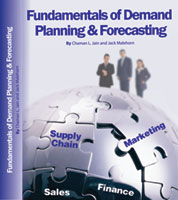Being a Hollywood celebrity means plenty of perks in addition to willing groupies. For example, the 2012 Oscars Nominee Gift Bag (valued at over $62,000) included a 5-day elephant safari in Botswana ($15,580), Eminence organic body scrub (with virgin coconut oil and raw sugar cane, $48), Naughty Bits Brownies ($50), and a year of unlimited blowouts at JM Blowdry (Beverly Hills' newest and hottest blowdry salon, valued at $2000. See these video testimonials by satisfied customers John E. and Newt G.) 1
Vaportrim is the newest scientific breakthrough in vapor technology. It works with the senses of taste and smell so that users feel full and eat less. Research has shown that 70-75% of what people taste comes through smell. With Vaportrim, as the vapor is inhaled, smell and taste receptors send messages to the brain which release hormones that tell the body it’s full.2
New Forecasting Book
 While not yet a Hollywood celebrity, I received my own version of an Oscar Gift Bag this week in the form of a signed copy of Fundamentals of Demand Planning & Forecasting by Chaman Jain and Jack Malehorn.
While not yet a Hollywood celebrity, I received my own version of an Oscar Gift Bag this week in the form of a signed copy of Fundamentals of Demand Planning & Forecasting by Chaman Jain and Jack Malehorn.
Dr. Jain is a founder of the Institute of Business Forecasting, longtime editor of its Journal of Business Forecasting, and Professor of Economics at St. Johns University.
Jack Malehorn is Assistant Professor of Economics at Georgia Military College, and contributes a quarterly economic forecast article in JBF.
The two have combined to produce a comprehensive companion for the practicing business forecaster, covering fundamentals and the forecasting process, forecasting data and modeling, performance metrics, communicating forecasts, and (my favorite) worst practices.
The communicating section includes lists of specific rules for reporting, presenting, and "selling" your forecasts to the organization. This may be the most important part of the book. It emphasizes the practice of consistency and diplomacy in the forecasting communication process. A standard, consistent report format (with graphs preferable to tables, and readily understood metrics) helps convey the results without wasting time explaining (and arguing about) the calculations. Overly complex or confusing metrics just foment the distrust that already exists around the forecasting process and forecasters in general.
Jain and Malehorn also suggest conveying the concept of forecastability, so management understands why some products are inherently easier to forecast than others. I would go beyond this to suggest ways for management to improve forecastability, for example by eliminating the incentives that encourage customers to have unpredictable demand. (Remember the Aphorism: The surest way to get better forecasts is to make the demand forecastable.)3
Ultimately, a forecast is of no value unless it is used to make better decisions and improve the organization's performance. "So, forecasters not only have to produce good forecasts but also know how to sell them" (p.300). To find out how, order Fundamentals of Demand Planning & Forecasting on the IBF website.
-----------------------------
1Who needs the comfort and convenience of blow-drying your hair at home, when you can drive across town and spend $2000 having it done by a professional?
2At first I thought this "scientific breakthrough in vapor technology" was implausible. Haven't we always been taught that inhaling just gives a person the munchies? But then I found two counterexamples:
- Bill Clinton never inhaled, yet has always battled his weight.
- Has anyone ever seen a fat Rastafarian?
I even searched Google Images for "fat Rastafarian" yet (with 35,600 hits!) still came up empty.
(Page 1 of the search did, however, yield images of a dog, cat, orangutan, and sheep with dreadlocks, along with a marble statue of a ripped Zeus(?) with the caption "My abs block arrows for breakfast." Note to Google: You may want to tweak your search algorithm a bit.)
So Vaportrim must really work! QED
3Even if you don't believe me, perhaps Peter Drucker's "The best way to predict the future is to create it" can convine you.

2 Comments
You're on the gravy train now. I received a copy of Marketing Research using SAS Enterprise Guide, but I've been keeping it to myself in case I'm supposed to declare it on my tax return.
Pingback: Ready – fire – aim - The Business Forecasting Deal